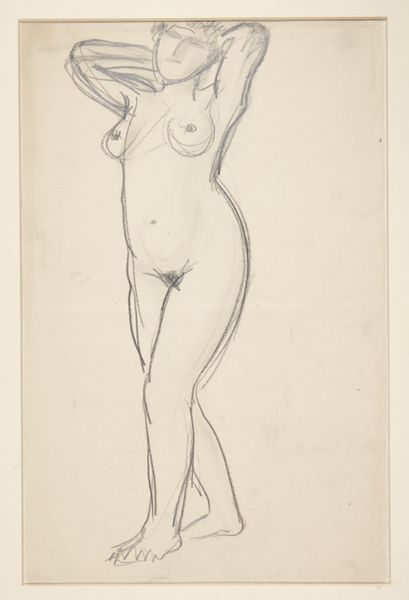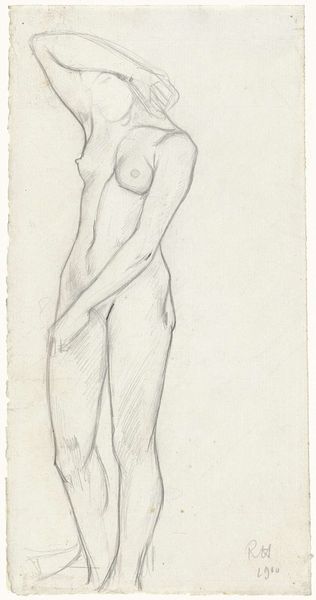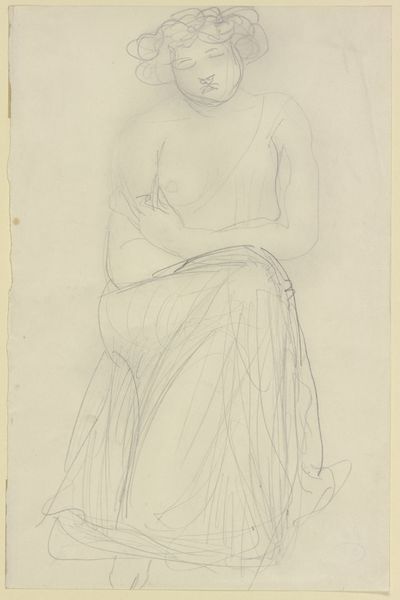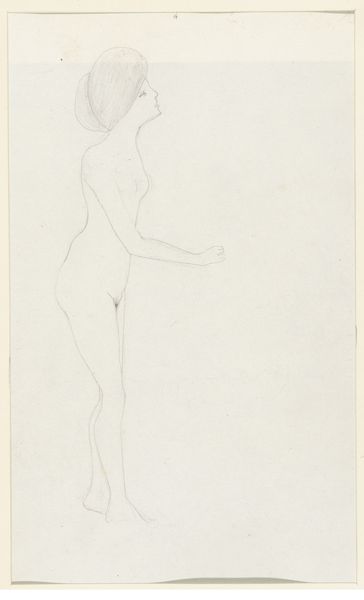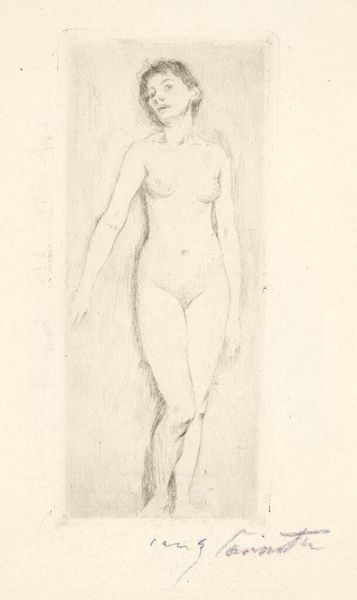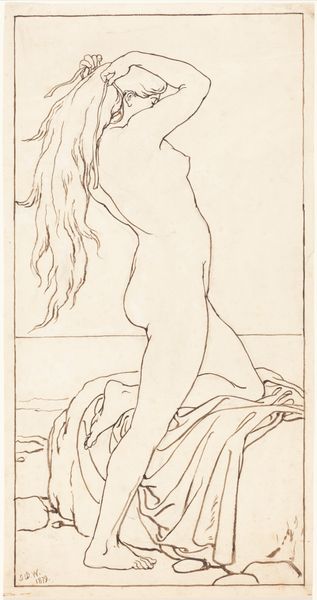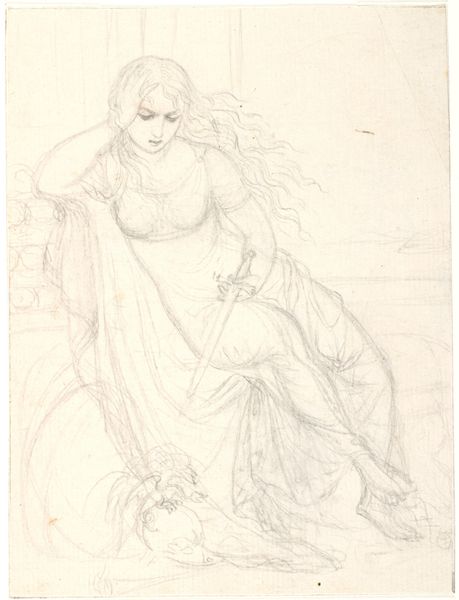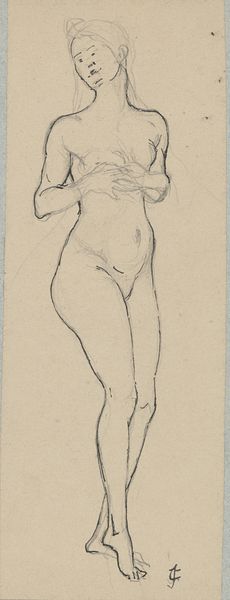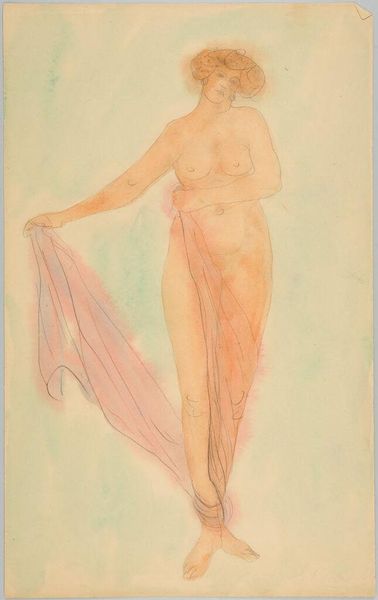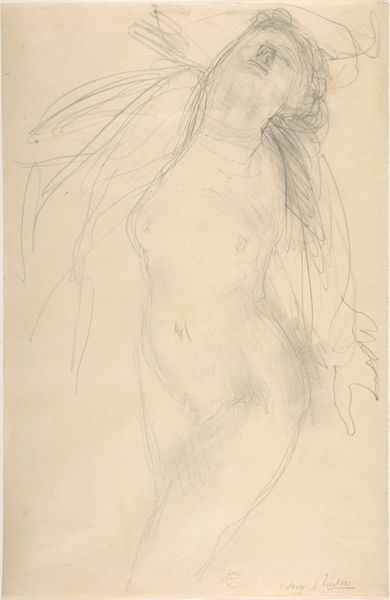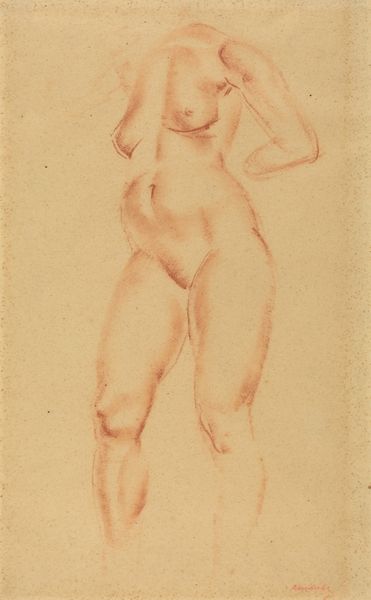
Stående kvinde. Studieblad efter relieffer i Borobudur, Java 1921
0:00
0:00
drawing, pencil
#
drawing
#
asian-art
#
pencil
Dimensions: 167 mm (height) x 96 mm (width) (bladmaal)
Editor: Here we have Svend Rathsack's "Standing Woman. Study sheet after reliefs in Borobudur, Java" from 1921, a pencil drawing on paper. It feels unfinished, like a ghost of an image. What strikes you when you look at this, particularly knowing it was inspired by reliefs in Borobudur? Curator: What immediately stands out is the act of translation. Rathsack isn't simply copying, he's interpreting. He's distilling the essence of the Borobudur reliefs into a Western artistic language, almost like a memory being reconstructed. Do you see how the lines are tentative, searching? Editor: Yes, definitely. It's like he’s trying to capture something fleeting, the essence of the form rather than its precise details. Curator: Exactly. The Borobudur reliefs are narratives, densely packed with symbolism within the Buddhist tradition. Here, that complexity is reduced. The standing woman becomes more of an archetype. A symbol of serenity, perhaps? Editor: I hadn't thought of her as an archetype, but that makes sense. She lacks individual features; she becomes a representation of femininity within a spiritual context. Curator: Consider what symbols Rathsack *chooses* to depict, and which he omits. The items she carries, the drapery, all resonate within a specific cultural and iconographic system, but are presented to a European audience now, lacking cultural context. What happens to their meaning? Editor: They become more ambiguous, more open to individual interpretation, almost floating free of their original significance. Perhaps this hints at the broader European fascination and misunderstanding of Eastern cultures at the time? Curator: A very insightful point! The drawing operates then on multiple levels: as an artwork in its own right, as a document of artistic influence, and as a lens through which to examine the cross-cultural exchange of ideas and the selective preservation of cultural memory. Editor: That's given me so much to consider; it really enriches the viewing experience.
Comments
No comments
Be the first to comment and join the conversation on the ultimate creative platform.
